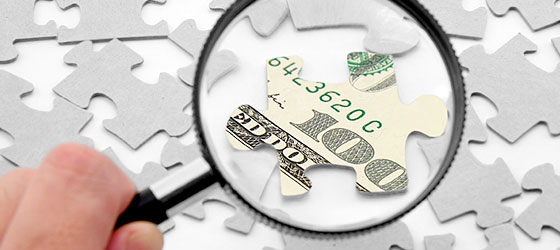One of the biggest tax issues of 2020 has been clarified with the signing of the Consolidated Appropriations Act, 2021, (CAA 2021), and that was whether expenses that are normally deductible and that were paid with the proceeds of a Paycheck Protection Program (PPP) loan that is forgiven are truly deductible.
The CARES Act, which became law on March 27, 2020, was drafted so quickly that the question of deductibility was left out, but several members of Congress made it clear that deductibility was the intent all along. The IRS went the other way, publishing a notice (2020-32), a revenue ruling (2020-27), and a revenue procedure (2020-51), that took the opposite stance: PPP-related expenses that were forgiven were not deductible, therefore potentially causing business’s taxes to become much higher.
Congress has now reversed the IRS’s position with CAA 2021 in Section 276 (PPP) and 278 (EIDL). Gross income does not include forgiveness of PPP loans and emergency EIDL grants. Deductions are allowed for normally deductible expenses paid with PPP loan proceeds that were forgiven. It also provides deductibility for Second Draw PPP loans. This is all good news for taxpayers with PPP loans.
However, there could be timing issues that could reduce the deductibility of the full amount of the PPP expenses. There could also be amounts “at risk,” which is a tax term that limits your deductions in certain cases.
All of these issues need to be carefully considered on a case-by-case basis. Your tax professional is your best source to help you review all of these factors so that both your PPP loan forgiveness and allowable deductions are timed to reduce your tax bill.

Many families and small business owners may have seen decreases in income over the last several months. Money struggles can cause us to experience stress and worry, and none of us need that right now. Instead we need to boost our immune systems and decrease stress.
Here are some tips on how we can take back control of our finances and reduce our stress around money.
- Assess your situation.
Take an inventory of your bank accounts, credit cards, and other financial accounts. This helps you to see the entire picture. You can be financially healthy in different ways. For example, you might be low on income, but if you have healthy savings or plenty of assets, you might be just fine.
the entire picture. You can be financially healthy in different ways. For example, you might be low on income, but if you have healthy savings or plenty of assets, you might be just fine.
- Track your spending.
When you can see where the money is going, you can make good decisions about what changes you need to make. Using software like QuickBooks or simply a spreadsheet can help you see how much you really need for things like the rent or mortgage, food, utilities, and other necessities.
- Make any changes that you need to.
If you have more expenses than income, here are several ways to get back in balance:
- Cut any unnecessary spending. For example, trade the expensive $100+ cable bill for a $15 Netflix subscription, at least for a while.
- File your taxes early, especially if you have a refund coming.
- Avoid temptation spending if you don’t have enough for the basics. Remember what’s important and find the will to curb impulses.
- Sell some of the items you own that you no longer need to raise money.
- Get a second job.
- Get support from local nonprofits that can help you if you qualify.
- If you must, dip into your savings or 401(k).
- Ask family members to help.
- Build a budget and stick with it.

Making a plan helps some people reduce their stress a great deal. They feel good that they now have goals and can develop new habits that will work for their lifestyle.
In your software or spreadsheet, commit to monthly spending limits for each major category: housing and utilities, food, transportation, clothing, entertainment, savings, paying off debt, and other.
Each month, track how you did by comparing your actual spending with your planned spending. Give yourself a grade on how you did, and either reward yourself or make the changes you need to.
- Pay off debt.
If you have debt, make a plan to pay it off systematically. Here are some ways you can speed that up:
- Pay down the debt that has the highest interest rates. You might even be able to consolidate and refinance your debt to a lower rate.
- Make a payment every single month, even if it’s small.
- See a credit counselor for more ideas on how to get out of debt faster.
- Build a cushion for the future.
If your spending and income is balanced, but you don’t have a savings cushion, that can also be stressful. You need a safety net to fall back on for times just like these.
Decide on an amount that you can put away for a “rainy day” fund, and stick to it. It’s also never too early to start saving for your retirement years. The younger you start, the more your money will grow into a significant nest egg, providing comfort and flexibility in your final years.
- Identify any other stressors related to money.
Perhaps a relative constantly asks you for money, and this causes you stress. In this case, you may have to make a “tough love” decision to reduce your stress while maintaining family relationships. These are very personal, individual decisions that include factors far beyond finance. But if they are causing stress, some kind of action should be taken.
- Make your accounts work for you.
If possible, select credit cards that give cash back, miles, or other perks. Keep your bank balance high enough so that you don’t get charged a monthly fee, and try to get an account that pays interest. You won’t get rich from these things, but they are fun perks that help you save.
- Invest wisely so you can sleep at night no matter what happens.
Understand your risk tolerance level when it comes to investments, and avoid investments that are too risky. You’ll sleep better at night knowing your money is safe.
Hopefully, these tips will help you decrease your money stress and improve your control over your finances.

Many small businesses have become extra innovative and resourceful when it comes to cash flow. Here are some ideas to help make it through the next few weeks or months. Rearrange your 2020 budget There are a lot of things you may not need to spend money on this year. They can…
 Money and Marriage
Money and Marriage
One of the biggest things that can cause fights in a marriage is money. No matter where you are in a relationship, it’s a good idea to discuss these major money topics so you’ll know where you stand.
Show me the money: Combine or keep separate or both
One of the best ways to avoid conflict is to put your money into three separate piles: yours, your spouse’s, and a joint set of accounts. In this arrangement, each of you has control over some money that is all your own. The household spending will then come out of the joint account, and you both will make contributions to it on a regular basis.
As a couple, you’ll need to discuss who will pay for what as well as what your regular contribution will be to the joint account. This is no small discussion. The more thorough you are, the less conflict you’ll have over money.
One spouse or partner will normally handle the joint finances, and it’s typically the person with the most accounting knowledge. However, you both should have access to this account in case of emergency.
Savings and future purchase goals
Do you have goals about upcoming large purchases? These might include:
- A home purchase or improvement
- Children’s education
- Health care needs
- Saving for retirement
- A car purchase
- A second home purchase
- A vacation
- Another item such as a boat, furniture, technology gadgets, a plane, or something else
- A nest egg or cushion
If so, calculate how much you need and make a plan to set aside the money you need in the time frame you agree on.
Spending
 Do you like to spend more than your spouse? Or is it the other way around? When money is flowing, there is usually no problem. When money is tight, that’s when the problems come in.
Do you like to spend more than your spouse? Or is it the other way around? When money is flowing, there is usually no problem. When money is tight, that’s when the problems come in.
When there are conflicts in the area of spending, the best course is to focus on priorities. If you can agree on your priorities and goals, it can often shift spending habits.
Budget
You may want to set a budget to stick as close as possible to expected spending limits. Start by recording current spending in these areas, and then agree on the amounts you want to spend in the future.
- Rent or mortgage payment
- Utilities, including electric, gas, water, garbage, phone, internet, cable
- Food and supplies, including grocery, kitchen items, liquor, and eating out
- Entertainment, including travel, vacations, local events, holiday decorations, Netflix subscriptions, tech gadgets, books, etc.
- House maintenance including repairs, cleaning, lawn care, appliances, and decorating
- Automobile, including gas, insurance, licenses, and maintenance
- Clothing and accessories, including dry cleaning
- Health care, including pharmacy, doctor’s visit, and HSA contributions
- Personal care, such as haircuts, nail care, etc.
- Tuition and/or education expenses
- Contribution to retirement and savings accounts
- Charitable contributions
- Taxes, including federal, state, local, school, and property
- Paying down credit card or student loan debt
Retirement
 What does retirement look like to both of you? Having this conversation will be enlightening. Know that dreams and goals can change over time as retirement approaches.
What does retirement look like to both of you? Having this conversation will be enlightening. Know that dreams and goals can change over time as retirement approaches.
You’ll want to have an idea about what you’d like to spend during your final years so that you can make plans to start accumulating that wealth now. The sooner you start, the more years you have to build up your retirement assets.
Monitoring your progress
Keep an eye on your account balances to make sure everything is as it should be. Review bank and brokerage account statements and/or your budget once a month or at least once a quarter so there are no surprises or trends that sneak up on you.
When you reach your goals, reward yourself. Managing money is hard work, and you deserve to pat yourself on the back when a goal is achieved. If there is anything we can do to help you make your financial dreams come true, please reach out any time.
As we move into the fall season and the final quarter of the year, it’s a perfect time to commit to a project in your business that will help you reach the year’s end in better shape. Here are five ideas:
1. Back-to-School Time
If payroll expenses are one of the higher costs in your business, then it makes sense to boost your team’s productivity and maybe also your own. Fall is back-to-school time anyway, so it’s a natural time of the year to take on a course, read a business book, or hire an organizer to help you get more from your workspace.
If you spend a lot of time doing email, consider taking a course on Microsoft Outlook® or even Windows; learning a few new keystrokes could save you tons of time. If you need more time, look for a book or course on time management. Look for classes at your local community college or adult education center.

2. A Garage Sale for Your Business
Do you have inventory in your business? If so, take a look at which items are slower-moving and clear them out in a big sale. We can help you figure out what’s moving slowly, and you might even save on taxes too.
3. Celebrate Your Results
Take a checkpoint to see how your revenue and income are running compared to last year at this time. Is it time for a celebration, or is it time to hunker down and bring in some more sales before winter? With one more quarter to go, you have time to make any strategy corrections you need to at this time. Let us know if we can pull a report that shows your year-on-year financial comparison.
4. Get Ready for Year’s End
Avoid the time pressure of year’s end by getting ready early. Review your balance sheet to make sure your account balances are correct for all transactions entered to date. You will be ahead of the game by getting the bulk of the year reviewed and out of the way early.
Also make sure you have the required documentation you need from vendors and customers. One example is contract labor that you will need to issue a 1099 for; make sure you have a W-9 on file for them. If we can help you get ready for year-end, let us know.
5. Margin Mastery
If your business has multiple products and services, there may be some that are far more profitable than others. Breaking these numbers out to calculate your profit margins or contribution margins by product or service line can help you see the areas that are adding the most income to your bottom line. Correspondingly, you can determine if you have any items that are losing money; knowing will help you take the right action in your business. Refresh your financials this fall with your favorite idea of these five, or come up with your own fall project to rejuvenate your business.
contribution margins by product or service line can help you see the areas that are adding the most income to your bottom line. Correspondingly, you can determine if you have any items that are losing money; knowing will help you take the right action in your business. Refresh your financials this fall with your favorite idea of these five, or come up with your own fall project to rejuvenate your business.
Many businesses operate with seasonal peaks and valleys. Retail stores flourish in their busy holiday season. Construction contractors are busy when the weather is good. Accountants are very busy from January through April, but also experience a quarterly peak in July and October.

Your business many have its own calendar of busy and slow times. If your business goes through slow times, then your cash flow may suffer at certain times of the year. But having seasonal sales is only one of the reasons for a bumpy cash flow.
You might also have a business where annual payments are made for many items such as equipment purchases, software licenses, insurance renewals, and other large costs. On the revenue side, it could be that your clients pay you annually, which can be hard to predict.
There are many solutions that can help to smooth out the seasonal bumps, and here are a few ideas for your consideration.
Plan for Prosperity
 When income and expenses go up and down and up and down, it’s really hard to know if you have enough money for obligations coming up. Creating a budget can help a great deal. Consider creating two budgets: one that shows the ups and downs and one that averages a year’s income and expenses into twelve equal parts.
When income and expenses go up and down and up and down, it’s really hard to know if you have enough money for obligations coming up. Creating a budget can help a great deal. Consider creating two budgets: one that shows the ups and downs and one that averages a year’s income and expenses into twelve equal parts.
With both budgets, you’ll be able to see which months will be deviating from average and by how much. From there, it’s easy to create some forecasts so you can stay on top of your cash requirements.
Cash vs. Accrual Basis
It might help your business decision-making to convert your books from cash basis to accrual basis. This is a huge decision that should be made with an accounting and tax expert, as there are plenty of ramifications to discuss. 
In some cases, the accrual basis of accounting will help keep those annual payments from sneaking up on you as 1/12 of the payment can be accrued on a monthly basis to a payables account. This also keeps your net income figure steadier from month to month.
If your clients prepay their accounts on a yearly basis, you can book the income monthly and keep the difference in a Prepaid account. This spreads your revenues out and recognizes them over time.
“Hiding” Money
If you feel accrual basis accounting is a little too much of a commitment, your accountant can still work with you to help you avoid the impulse of spending too much during the cash-rich busy season. Perhaps the excess cash can be put into a  savings account until it’s needed. You can draw out 1/12 each month as you need it. A little planning such as the above suggested forecasts will help you determine how much you can take out each month. You can even name the Savings account “Do Not Spend!” or “Save for a Rainy Day.”
savings account until it’s needed. You can draw out 1/12 each month as you need it. A little planning such as the above suggested forecasts will help you determine how much you can take out each month. You can even name the Savings account “Do Not Spend!” or “Save for a Rainy Day.”
If it’s just too tempting to have all that excess cash building up in the good times of the year, try one of the ideas above to take back cash flow control and smooth out those bumps.
The technology side of the accounting industry is rapidly changing and expanding. Literally hundreds, if not thousands of new companies and new software applications have sprung up to help small businesses automate their processes and save time and money.
The best way to profit from all of this innovation is to first identify where you can best use the technology in your business. Here are three places to look:
 What business tasks are you still using pen and paper for? Look what’s on your desk or in your filing cabinet in the form of paper, and that will be your next opportunity for automation. For example, are you still hand-writing checks? There’s an app (or two) for that.
What business tasks are you still using pen and paper for? Look what’s on your desk or in your filing cabinet in the form of paper, and that will be your next opportunity for automation. For example, are you still hand-writing checks? There’s an app (or two) for that.
Sticky notes and to do lists have been replaced with Evernote. Business cards you collect can go in a CRM (customer relationship manager). All of your accounting invoices and bills can be digitized and stored online.
Make a list of all the manual and paper processes you do every day and look for an app that can make the task faster for you.
 Take stock of what systems you already have in place. The opportunity to fill the gap is where you might have systems that should talk to each other but don’t. If you need to enter data into two different places, there may be a chance to automate and/or integrate the systems or data. For example, your point of sale or billing system should integrate well with your accounting system. A few other examples include accounting and payroll, CRM and accounting, inventory and accounting, project management and time tracking, and time tracking and payroll.
Take stock of what systems you already have in place. The opportunity to fill the gap is where you might have systems that should talk to each other but don’t. If you need to enter data into two different places, there may be a chance to automate and/or integrate the systems or data. For example, your point of sale or billing system should integrate well with your accounting system. A few other examples include accounting and payroll, CRM and accounting, inventory and accounting, project management and time tracking, and time tracking and payroll.
The more your systems integrate and work as a suite, the better.
 It could be you have your systems automated, but the systems are not the best choice for your business requirements. If your systems don’t meet many of your business requirements, it may be time to look for an upgrade or a replacement.
It could be you have your systems automated, but the systems are not the best choice for your business requirements. If your systems don’t meet many of your business requirements, it may be time to look for an upgrade or a replacement.
If you are performing a lot of data manipulation in Excel or Access, this might also signal that your systems are falling short of your current needs. Look where that’s happening, and you will have identified an opportunity for improvement.
Look in these three areas in your business, and I bet you’ll not only find an app for that, you’ll also find some freed up time and money once you automate.
 New Business Direction LLC
New Business Direction LLC